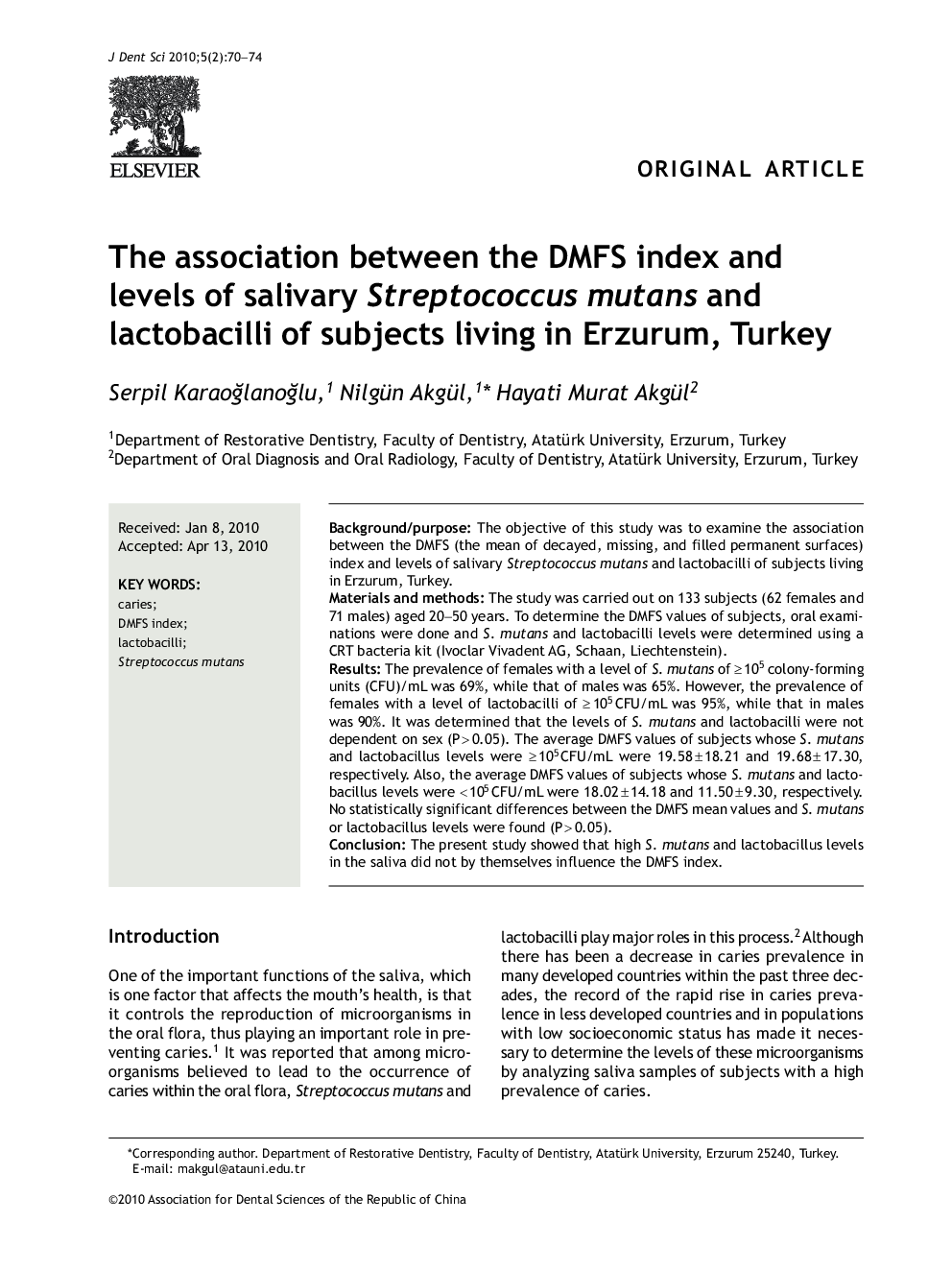| Article ID | Journal | Published Year | Pages | File Type |
|---|---|---|---|---|
| 3144931 | Journal of Dental Sciences | 2010 | 5 Pages |
Background/purposeThe objective of this study was to examine the association between the DMFS (the mean of decayed, missing, and filled permanent surfaces) index and levels of salivary Streptococcus mutans and lactobacilli of subjects living in Erzurum, Turkey.Materials and methodsThe study was carried out on 133 subjects (62 females and 71 males) aged 20–50 years. To determine the DMFS values of subjects, oral examinations were done and S. mutans and lactobacilli levels were determined using a CRT bacteria kit (Ivoclar Vivadent AG, Schaan, Liechtenstein).ResultsThe prevalence of females with a level of S. mutans of 3 105 colony-forming units (CFU)/mL was 69%, while that of males was 65%. However, the prevalence of females with a level of lactobacilli of ≥ 105 CFU/mL was 95%, while that in males was 90%. It was determined that the levels of S. mutans and lactobacilli were not dependent on sex (P > 0.05). The average DMFS values of subjects whose S. mutans and lactobacillus levels were ≥ 105 CFU/mL were 19.58 ± 18.21 and 19.68 ± 17.30, respectively. Also, the average DMFS values of subjects whose S. mutans and lacto-bacillus levels were < 105 CFU/mL were 18.02 ± 14.18 and 11.50 ± 9.30, respectively. No statistically significant differences between the DMFS mean values and S. mutans or lactobacillus levels were found (P > 0.05).ConclusionThe present study showed that high S. mutans and lactobacillus levels in the saliva did not by themselves influence the DMFS index.
